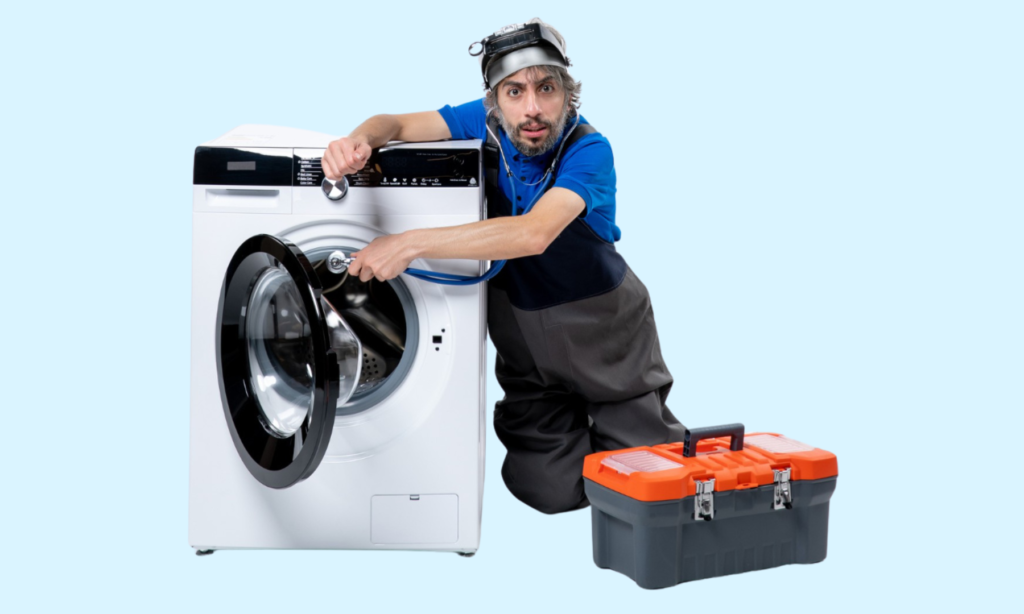
When your washing machine stops spinning, it can throw your entire laundry routine off balance. A non-spinning washer often means wet clothes, wasted time, and rising frustration. But before you panic or start thinking about buying a new appliance, there are a few things you can check yourself.
At Appliance Fix & Care, we help homeowners solve these common issues every day. In this guide, we’ll walk you through what to do first when your washing machine isn’t spinning, including possible causes and easy solutions.
1. Check the Load Balance
Unbalanced loads are the most common reason your washing machine won’t spin properly. If the clothes inside are too heavy on one side—like a single wet blanket or towel—the drum can’t spin efficiently and might stop altogether for safety.
What to do:
-
Open the washer and redistribute the clothes evenly.
-
Remove bulky items and run a smaller load.
-
Try spinning again.
2. Inspect the Lid or Door Switch
Washing machines are built to pause spinning if the lid or door is open. If the lid switch (for top loaders) or door lock (for front loaders) is broken or misaligned, your machine might think it’s still open.
What to do:
-
Gently close and reopen the lid or door.
-
Listen for a click when you close it—that click is the switch engaging.
-
If there’s no sound or it still won’t spin, the switch may need repair.
3. Make Sure the Washer Isn’t Overloaded
Too many clothes in the washer can overwhelm the motor or prevent it from spinning altogether. Overloading can also cause long-term damage.
What to do:
-
Remove some items and try spinning again.
-
Follow the manufacturer’s guidelines for load size.
4. Check for Clogs in the Drain Hose or Pump
If your machine can’t drain water, it won’t spin either. A clogged drain hose or faulty pump could be the reason.
What to do:
-
Unplug the machine.
-
Inspect the drain hose behind your washer for any visible blockages or kinks.
-
Remove the hose and rinse it out if necessary.
-
For front loaders, check the drain filter/pump behind the small access panel.
Caution: Water may spill out when checking the drain hose or pump—keep a towel handy.
5. Examine the Drive Belt (for Older Models)
In older washers, a worn or broken drive belt can stop the spin cycle. If you hear a humming noise but no spinning, this could be the issue.
What to do:
-
Unplug the washer and remove the back panel (if you’re comfortable).
-
Look for a rubber belt connecting the motor to the drum.
-
If it’s loose, frayed, or snapped, it needs replacement.
6. Try a Different Cycle or Reset the Washer
Sometimes, it’s just a software glitch.
What to do:
-
Cancel the current cycle.
-
Unplug the washer for 1–2 minutes.
-
Plug it back in and run a different cycle.
-
If it spins now, the problem may have been a temporary error.
7. Listen for Unusual Noises
If you hear grinding, buzzing, or clicking noises, it could indicate a motor, transmission, or control board problem. These issues usually require professional diagnosis and repair.
When to Call a Professional
If you’ve tried the steps above and your washer still won’t spin, it’s time to bring in a certified technician. Ignoring the issue can lead to:
-
Water damage
-
Motor burnout
-
More expensive repairs
Our team at Appliance Fix & Care provides affordable, same-day washing machine repairs with expert technicians ready to help you. We service all major brands and models, ensuring your laundry is back on track fast.
A washing machine that won’t spin is frustrating—but in many cases, the fix is simple. Start with these basic checks and don’t hesitate to reach out for help when needed.
Need professional repair?
Visit our website: https://appliancesfixandcare.com/
Or call us directly at (813) 535-4647
We’re here to get your appliances working again—fast, friendly, and with care.